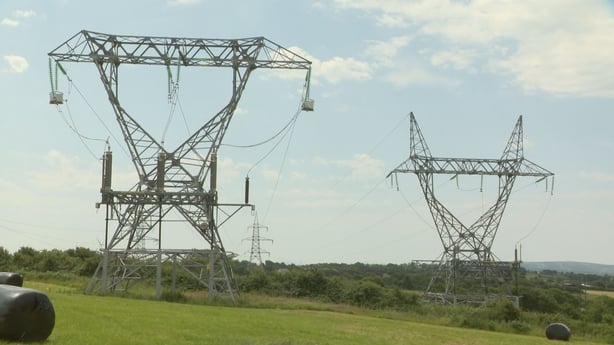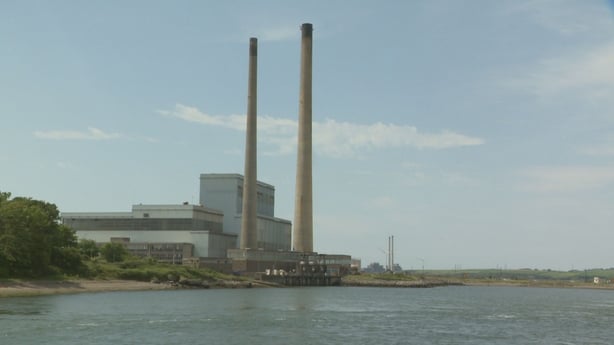The ESB is to cease burning coal at its Moneypoint Power station in Co Clare from today. The plant has been burning coal since it was set up 40 years ago.
However, the plant will continue to provide security of supply for Ireland's electricity system by operating as a back-up out-of-market generator of last resort for EirGrid.
It will use heavy oil for electricity generation in place of coal for the next four years.
ESB is continuing the transformation of its Moneypoint power station at Kilrush, into a renewable energy hub by ending the use of coal for electricity generation six months earlier than planned.
We need your consent to load this rte-player contentWe use rte-player to manage extra content that can set cookies on your device and collect data about your activity. Please review their details and accept them to load the content.Manage Preferences
It is a significant milestone in the organisation’s Net Zero carbon emissions strategy.
Two years ago, it signed an agreement with EirGrid to keep the plant generating electricity using oil from 2025 up to 2029.
It will only be required to operate when the electricity system is short of generating capacity, and only under instruction from EirGrid.

Oil generation is less carbon intensive than coal generation, and the station is expected to see significantly less running during this four-year period.
Moneypoint will remain a key site for ESB and for the mid-west region as the station evolves and transforms to support the Government to achieve its climate targets.
ESB commenced its transition away from fossil fuel generation at Moneypoint in 2017 with the construction of a 17MW onshore wind farm.
In 2021, it announced Green Atlantic at Moneypoint, a multi-billion euro plan to transform the site into one of the country’s largest renewable energy hubs, utilising its deep-water port and existing infrastructure.
Phase one of this plan was completed in 2022 with a €50 million investment in Ireland’s first synchronous compensator, a zero-carbon technology that allows the system to utilise ever increasing amounts of use of renewable electricity.
The Moneypoint power station has been operating since the mid 1980s.
It contains three separate coal-fired power generating units, capable of producing up to 305 MW of electricity each, giving the plant a total electricity generation capacity of 915 MW.
At its peak of operation, it was capable of supplying about a quarter of Ireland's total electricity needs.
However, in recent years its contribution has been significantly lower than that.
Before the Moneypoint station was built Ireland was very heavily dependent on imported oil for the generation of electricity.

However, the oil crises of 1973 and 1979, and the crippling shortages that resulted, underscored domestic and international fears about the security of that oil supply.
It was because of that it was considered a good idea to include a substantial coal-fired power station in the electricity production mix.
Coal is the most carbon intensive of all fossil fuels and is about 25% more carbon intensive per unit of electricity generated than Heavy Fuel Oil it replaced.
However, back in the 1980s when Moneypoint was commissioned very little attention was paid to the issue of carbon emissions from burning fossil fuels for electricity.
It that regard is perhaps ironic now that, as Ireland is ending the use of coal for electricity generation because of climate policy, it is temporarily reverting to burning the same type of oil for electricity that was being used before the three coal-fired units at Moneypoint were commissioned in the first place.
This time round however, Moneypoint will not be active in the wholesale electricity market and will in effect only be operated for limited hours.
It will be used as a back-up, out of market generator, that EirGrid can call on any time they need extra generation capacity to ensure a stable supply of electricity for the Irish market.
This means nevertheless that it will remain a critical station for the security of supply for the Irish electricity system, particularly over the winter period, and it will still be a significant source of carbon emission because it will burn a fossil fuel, oil.
ESB has installed two massive heavy fuel oil storage tanks at Moneypoint with a capacity between them of 50,000 tonnes.
Prior to this, the plant had the capacity to store enough coal for the generation of up to three months' supply of electricity.
It is intended that the back-up generation of electricity at the plant using heavy fuel oil will cease in 2029.






